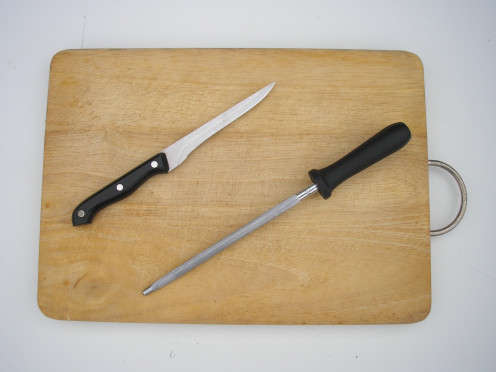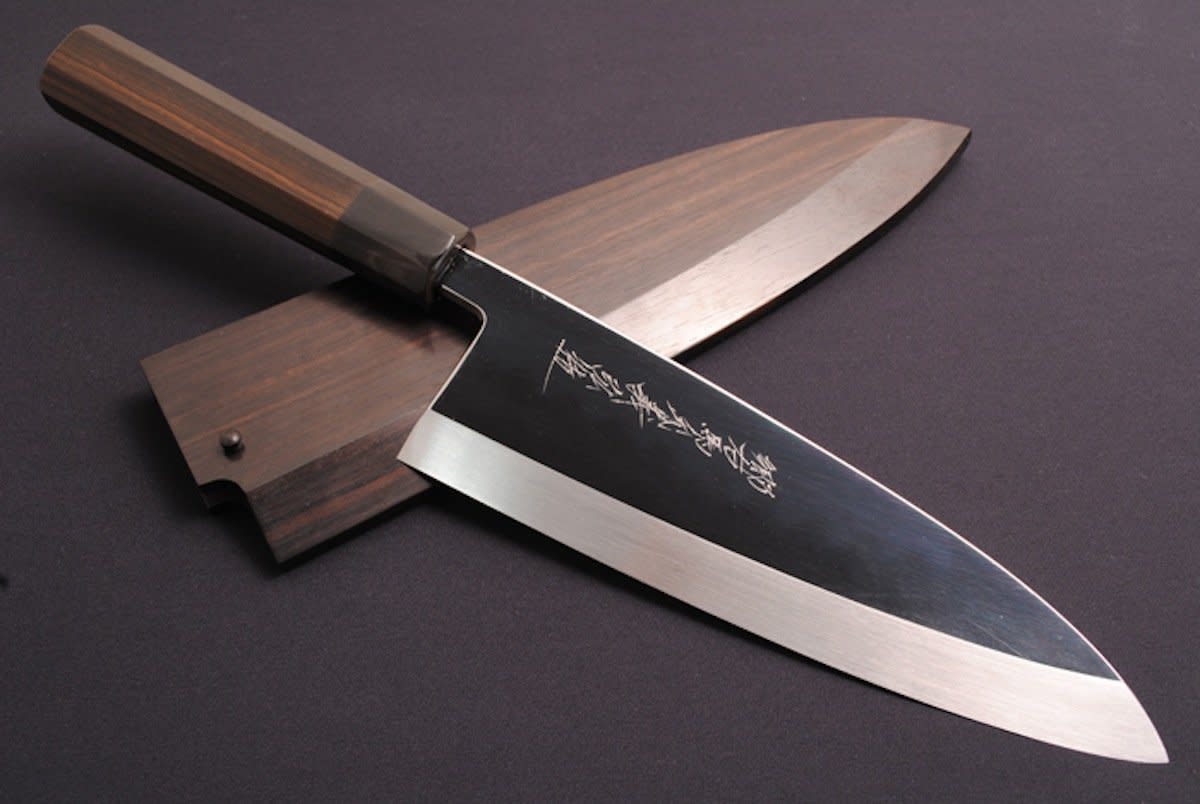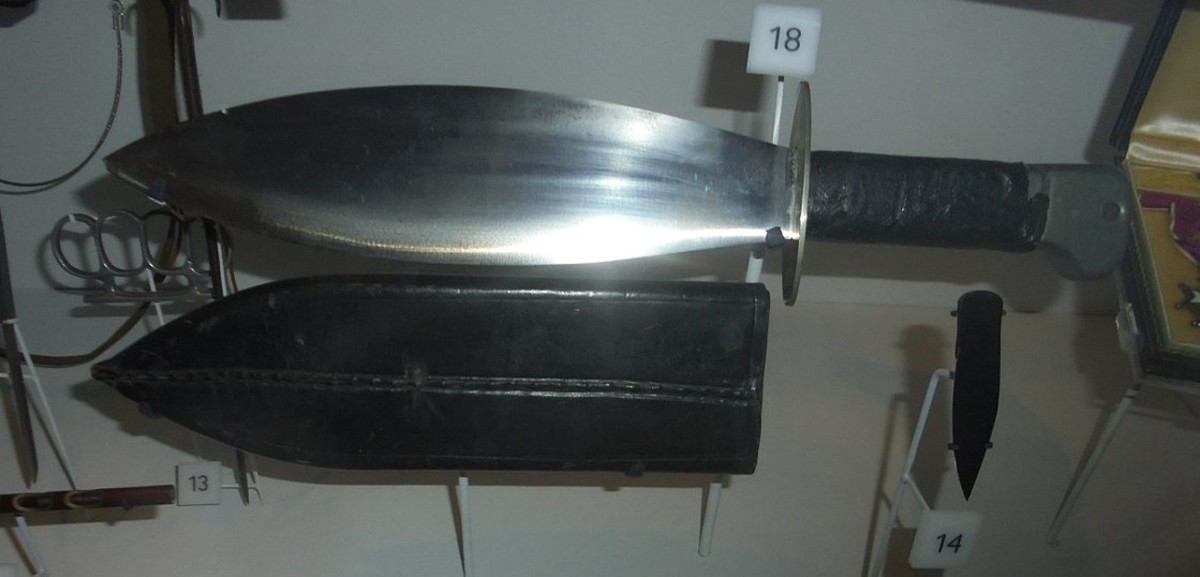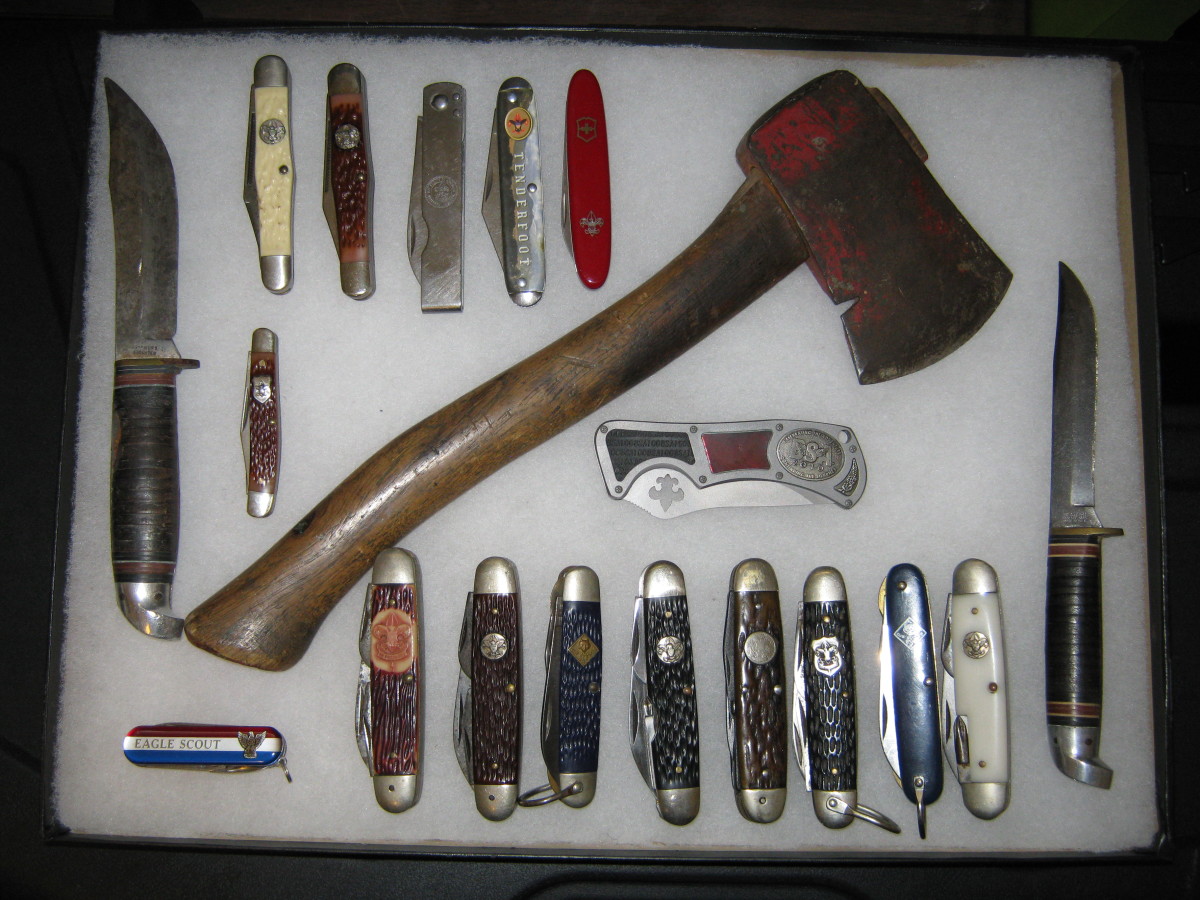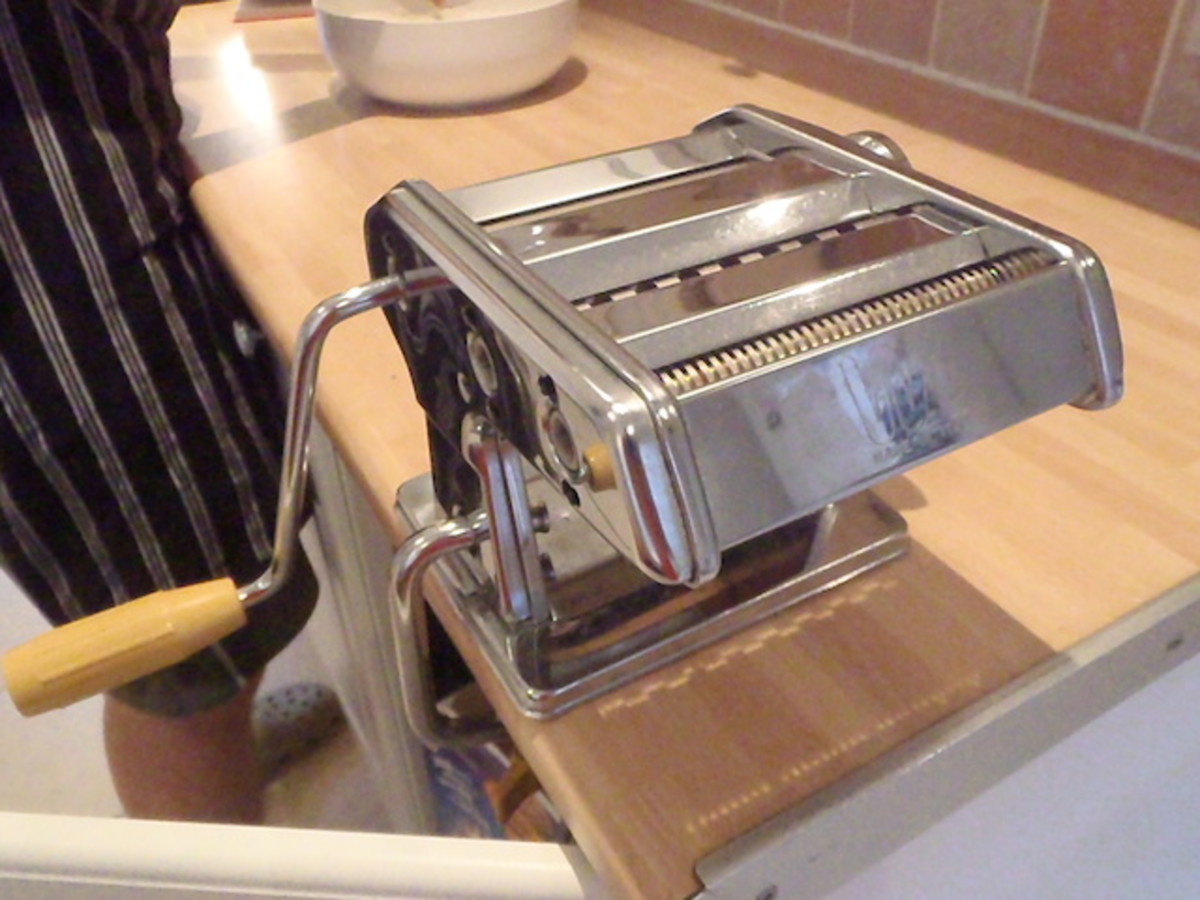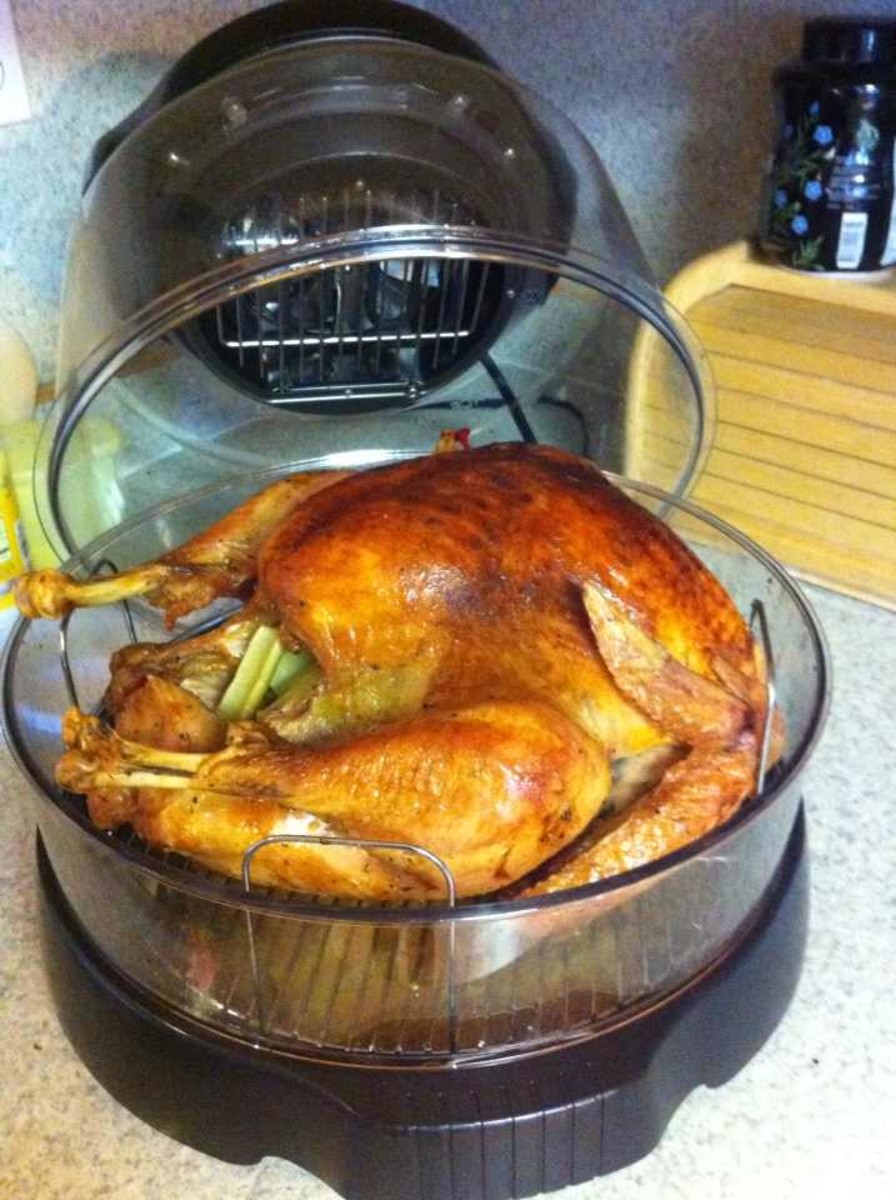How to Sharpen a Kitchen Knife

My Kitchen Knives
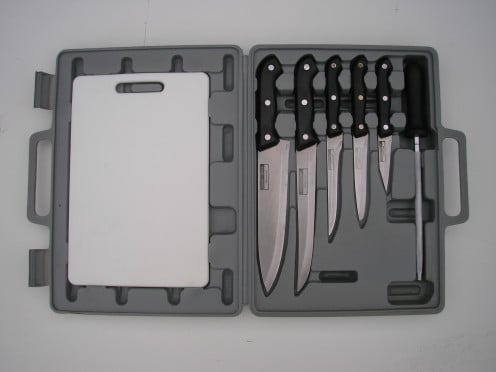

Importance of Sharpening Kitchen Knives
Keeping your kitchen knives sharp is essential for any task needed in food preparation, be it basic or professional. There is no such thing as a kitchen knife that “does not need sharpening” so do not be fooled by such claims.
It is a scientific fact that cutting will cause friction and that in turn will cause the edge of a knife to lose its sharpness.
A sharp kitchen knife not only makes your life easier but it is also a safety issue. Having a blunt knife will increase the pressure you exert and therefore the likelihood of the blade slipping and causing you an injury.
I have to hold my hands up and say “Been there, done that and have the scars to prove it”. Yes, I have been known to wear a band aid or two and even had a visit to casualty for a deep cut.
I really enjoy cooking and up until recently I had a tiny, pokey kitchen which was extremely challenging when it came to entertaining family and friends for dinner or even cooking dishes that required many preparation stages i.e. chopping, slicing, dicing and cutting, as worktop surfaces were severely lacking!
Recently I moved to the country and now enjoy more worktop space than I know what to do with thanks to my D.I.Y. partner (chef in training and general know it all) and his wonderful country cottage kitchen.
Recently, I was given a fabulous set of chef knives (set of 5) and shown the correct way of sharpening them. The difference it makes is amazing and I wanted to pass on my newly acquired fountain of knowledge.
There are two main sharpening tools for your knives:-
A Whetstone
and
A Sharpening Steel

What is a Whetstone?
Considered to be the best way of sharpening knives, this is a fine grained stone that is used for keeping your kitchen knives razor sharp.
It may be used for sharpening other cutting tools such as wood chisels, box cutters, stanley knives, penknives or modelling blades. The whetstone actually reshapes the cutting edge of the knife by grinding tiny metal particles of the blade.
At first it may be a little awkward but stick with it, once mastered it will not only keep your knives in pristine condition but will save you money in the long term.

How to Use A Whetstone With Great Tips and Advice

How to Use a Whetstone
- With the coarse grit side facing up, place your whetstone on your counter top or on a chopping board. A good idea is to put a wet paper towel under the stone to prevent it slipping.
-
Taking the handle of the knife hold the edge of the knife against the stone, point first, with the cutting edge meeting the stone at an angle of as close to as humanly possible, 22.5 degrees. Use your other hand if needed to stabilize the blade.
- With some pressure, move the blade forward and across the stone making sure the entire blade is in contact with the stone and remains as close as you can manage to the 22.5 degree angle.
- Perform this 10 times and then turn over the knife and repeat on the other side of the blade 10 times.
- Next turn over the Whetstone to the finer grit side and apply the same technique.
- Finally, use your sharpening steel to hone the knife followed by giving it a rinse and dry.

A Sharpening Steel
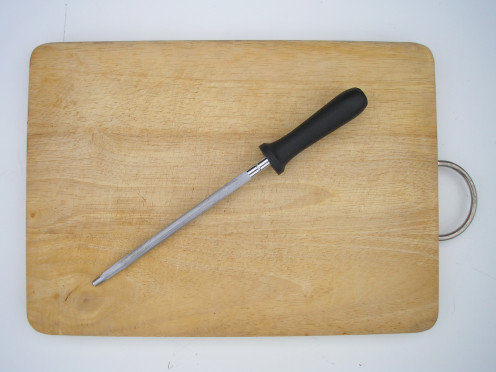
What is A Sharpening Steel?
A Sharpening Steel is the most widely used for sharpening knives in the home kitchen.
Often referred to as a honing steel or knife steel, this essential kitchen tool is used to smooth the edges on the blade after using the whetstone and it is highly recommended that you have one near you every time you are using kitchen knives.
Adopting new practices isn’t easy but with perseverance they will become habit. I am happy to say that I now reach for the Sharpening Steel every time I reach for a knife but I have to confess that this is because it is right there in my new knife set.
I sometimes still forget to sharpen but I’m getting better at it especially with the reminders from my partner!
If you are not going to have both sharpening tools, I suggest you definitely buy the honing steel. It is the only one that I have at present and it makes a huge difference.
Continuous knife work will cause the blade to go blunt but with a few quick strokes on the steel, you will feel the difference straight away.

Step by Step
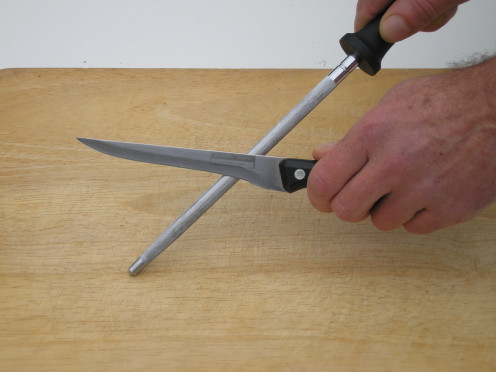
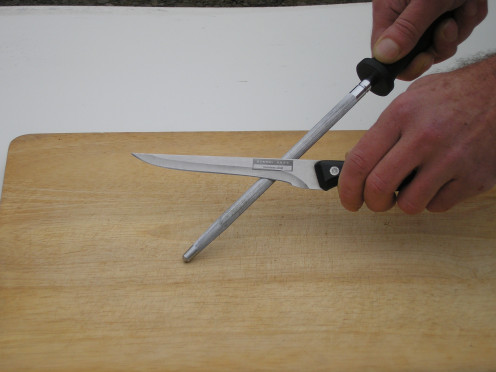
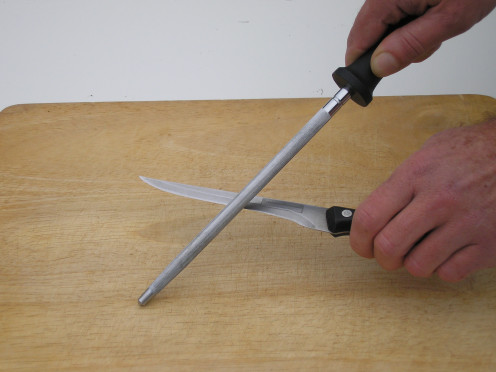
How to Use Sharpening Steel
- With one hand hold the sharpening steel point down on the dry chopping board with the tip just resting on the board.
- With your other hand, hold the knife across the steel with the back of the blade just touching the steel. Start with most of the blade in front of the steel as you will be moving the knife backwards toward yourself.
- Tilt the knife so that the cutting edge connects with the steel at a 22.5 degree angle.
- If you are not sure what 22.5 degrees looks like, 90 degrees is a right angle, 45 degrees is half of that and 22.5 is half of that!
- Gently pull the blade towards yourself whist at the same time moving the blade down the shaft of the steel. Make sure you cover the entire length of the blade, keeping your angle. Repeat this 10 times.
- Repeat this on the other side of the blade for 10 strokes, and then give your knife a rinse and towel dry. Rinsing your blade is important as it removes any small lose metal particles.
- Your sharpening steel should always be at least the same length as the knife you want to sharpen. As kitchen knives are different lengths, make sure your steel is at least the same length as your longest knife.

Using A Sharpening Steel
To Be Perfectly Blunt . . .
Having the correct tools in the kitchen makes a world of difference. A good set of kitchen knives is an essential "must have" for all standards of cooks, not just the professionals.
Keeping those knives in pristine condition is something that takes little or no time and the rewards will be ten fold!
Happy Sharpening!

Author Info -
Check out further information on the author, her bio and full body of works @ Suzie HQ
Credit Info -
All dividers used in this hub are used with permission granted on hub, Creating Dividers to Use on Your Hubs

